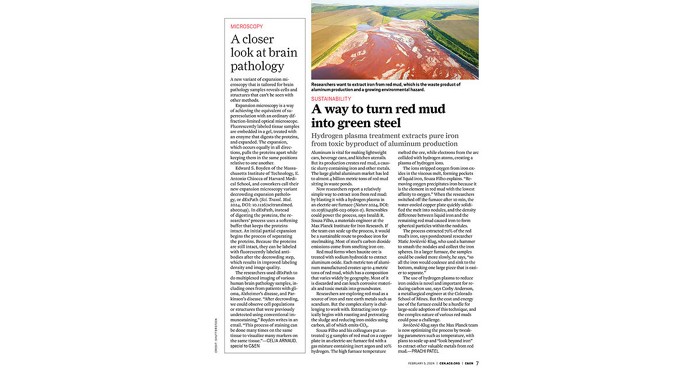Advertisement
Grab your lab coat. Let's get started
Welcome!
Welcome!
Create an account below to get 6 C&EN articles per month, receive newsletters and more - all free.
It seems this is your first time logging in online. Please enter the following information to continue.
As an ACS member you automatically get access to this site. All we need is few more details to create your reading experience.
Not you? Sign in with a different account.
Not you? Sign in with a different account.
ERROR 1
ERROR 1
ERROR 2
ERROR 2
ERROR 2
ERROR 2
ERROR 2
Password and Confirm password must match.
If you have an ACS member number, please enter it here so we can link this account to your membership. (optional)
ERROR 2
ACS values your privacy. By submitting your information, you are gaining access to C&EN and subscribing to our weekly newsletter. We use the information you provide to make your reading experience better, and we will never sell your data to third party members.
Readers debated the pros and cons of solid body wash online.
When the material is meant for common use, say, in a school, it is essential that only a liquid soap is made available. This is to avoid contamination. Other things should be only secondary.
K. N. Krishna Prasad
In fact, bar soap may be less contaminated than the dispenser or pump of liquid soap. Bar soap has germ-killing properties and gets regularly run under water by each user, whereas the plastic pumps and dispensers are touched by contaminated hands and not cleaned between each user (if ever).
Megan
I was surprised that one of the main deficiencies of sodium stearate and other soaps was not addressed, i.e., the formation of lime soaps (“bathtub scum”) when used with hard water. In the 1960s and 1970s, USDA/ARS and its industrial partners developed lime soap dispersing agents (LSDAs) to incorporate in soap-based formulations. If the new bars do not include LSDAs, users might end up “squeaky clean,” but their tubs and shower stalls won’t.
Bill Marmer
Corrections
▸ Jan. 29, page 22: The feature story on start-ups misstated some statistics about MIT. The university files 400 patents annually, not 800; its start-up exchange tracks 280 companies that license MIT technology, not 1,600; and 250 firms participate in its industrial liai- son program, not 275.
▸ May 21, page 6: The news story about unexpected CFC emissions incorrectly explained that researcher Sunyoung Park had found sources of emissions her group had detected. She and her colleagues currently are using atmospheric transport models to identify the source of those emissions.
▸ May 21, page 10: The news story describing a nanocomposite that combats biofilms incorrectly referred to carvacrol as an essential oil. Carvacrol is a compound found in the essential oil of oregano.
▸ May 28, page 24: The feature story about hair removers incorrectly stated that Heike Hanau is a marketing manager for Merck & Co. Hanau works at Merck KGaA.
▸ May 28, page A: The C&EN BrandLab story sponsored by Chemours contained two errors about glow-stick chemistry. Edwin Chandross observed the chemi- luminescent phenomenon that makes light sticks glow in 1962 at Bell Labs but had not created the sticks. The story also stated that Chandross claimed he had no idea that glow sticks were popular at mu- sic events. The source for that statement, which should have been cited, is a 2013 Vice story: bit.ly/2K9r0fq.





Join the conversation
Contact the reporter
Submit a Letter to the Editor for publication
Engage with us on Twitter